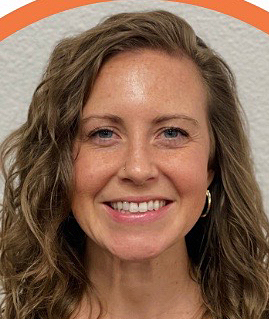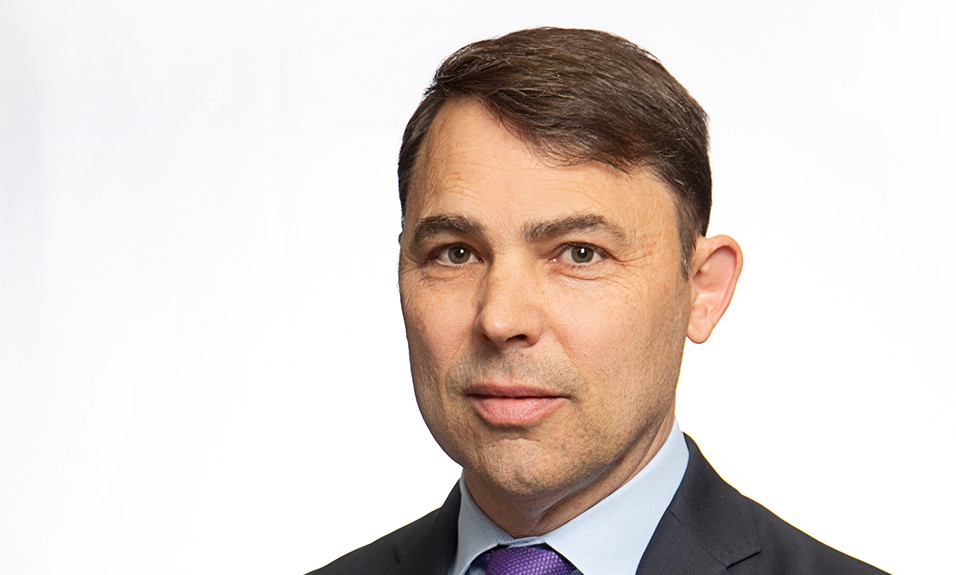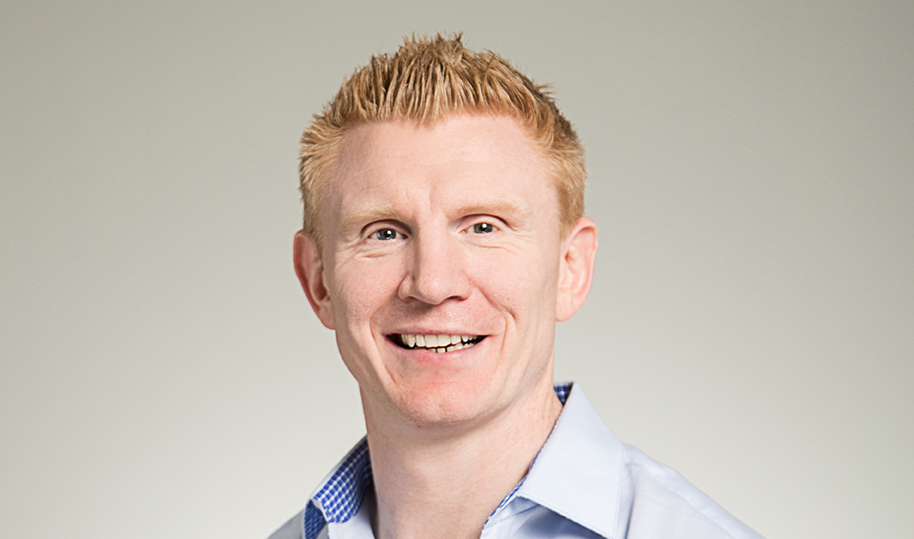Lyndzie Jackson, PT, talks about how the group has integrated physical therapy into its approach
By Jenny Diedrich
An Arizona-based outpatient treatment system, Recovia, is seeing great success with an innovative way to help patients with opioid addiction. Recovia’s integrated approach focuses on physical therapy as one of its main treatment methods to address prescription medication dependency, misuse of other substances and chronic pain.

Lyndzie Jackson, PT, director of physical therapy at Recovia, believes physical therapy is the future of substance use disorder treatment, especially for opioid addiction related to chronic pain. “As far as I’m aware, I believe [Recovia is] the only company in the nation doing this,” Jackson says. “It needs to be something that’s done, but it’s not quite gotten there yet. It’s difficult to figure out how to make a program like this work and function. There are so many moving parts.”
TreatmentMagazine.com recently talked with Jackson about Recovia’s treatment model and how physical therapy is used as part of the organization’s comprehensive and distinctive approach.
Q. Tell us about Recovia’s treatment philosophy.
A. Recovia’s premise is a multidisciplinary approach to treating a wide variety of things, including chronic pain, substance use and general mental health. We’re treating everything from a biopsychosocial, or whole-body, approach.
Recovia tries to hit each portion of that word. “Bio” means the physical body, so we have physical therapy to help address that. We also have medical providers—nurse practitioners or physician’s assistants. They are responsible for managing any medication if a patient is trying to get off of opiates and transitioning to [the opioid addiction medication] Suboxone. If they’re trying to quit drinking, they help them medically with that as well.
For the psychological part, we have counselors and psychologists. Then for the social piece, we run groups but call them classes, because they are more education-based. Each class has a subject that you’re learning with other patients. Recovia encompasses all pieces to help the patient get to healing in every sense of that word.
“Our first line of attack is teaching techniques to calm that nervous system down and bring them out of fight-or-flight mode.”
—Lyndzie Jackson
It’s an intensive program. [Patients] are here on average for about four hours, three days a week. As physical therapists in this program, we don’t operate independently. It’s very much a team approach. We’re communicating all day long with the counselors and medical providers so we’re all on the same page about what’s going on with the patient. That’s another unique aspect of what we do.
Q. What’s your background in physical therapy?
A. I’ve been a physical therapist since 2013. I started in the outpatient orthopedic realm seeing a wide variety of patients—post-surgical, high school athletes and a huge population of chronic pain. I worked in the outpatient world for about six years and recognized pretty quickly that there was a missing piece to treating chronic pain. Patients in the outpatient realm were somewhat of a revolving door. We could get them a little bit better, but they would never fully get better or make significant improvement.
I always felt like there was some emotional component that I didn’t necessarily have the tools to address. I heard about Recovia and what they’re doing here, and I thought, This sounds exactly like what I had in my head, but I was thinking I’d have to go back and get a psychology degree as well. I started with Recovia three years ago.
Q. What types of patients do you treat for addiction at Recovia?

A. There are two realms of patients. There’s addiction to opiates because they’ve been prescribed them for such a long time for chronic pain. But there’s also addiction related to getting substances off the street. Maybe it has to do with trauma they’ve been through or anxiety or depression, so that’s what fueled their addictions. We see both categories of patients.
Everyone in those categories comes to us with a nervous system that is ramped up into what’s called fight-or-flight mode. They’re hypersensitive, whether to pain or emotionally. They’re not sleeping. They’re not eating well. They’re not thinking clearly.
Q. How do you use physical therapy as part of addiction treatment?
A. Our first line of attack is teaching techniques to calm that nervous system down and bring them out of fight-or-flight mode. If we never address that, then we are not going to be successful in having them do any kind of movement. Especially with the chronic pain population, they’ve stopped moving because everything is painful.
In a typical physical therapy setting, you’re asking them to do five new exercises on the first day of meeting them. It creates a big pain response. It’s a protective mechanism of the body that lets the patient know, “Hey, I’m not going to do that again.” We have to first bring their system out of that fight-or-flight mode. We teach a lot of diaphragmatic breathing and use that with other relaxation techniques incorporating movement with breathing. It’s a slow progression of retraining the body and the brain that movement is safe and good for us. We have to take a little bit of a different approach than typical physical therapy would.
“[Patients have] stopped exercising years ago or they’ve been isolating. Getting movement again is helpful not just physically but also mentally and emotionally.”
When it comes to patients coming to us with addiction not necessarily because of pain, again their system is still ramped up into that fight-or-flight mode. That’s essentially why they’re using. They don’t like to feel that way, and so they’re using to get rid of that feeling. It’s giving them other tools to get their systems out of fight-or-flight mode. They’ve stopped exercising years ago or they’ve been isolating. Getting movement again is helpful not just physically but also mentally and emotionally. It gives them another outlet to manage their stress or anxiety that they were once using substances to treat.
Q. Can you share a patient success story you’ve seen at Recovia?
A. We’ve had several patients coming through with addiction to fentanyl. [One patient] was in his early 20s and had been through all kinds of different addiction programs in the past and maybe stayed sober for a little bit but eventually went right back to it. He had gone through detox and come straight to us. Coming to us, he wasn’t all that on board and thought it would be just like every other time.
At the beginning, we focused on really solidifying those central nervous system calming techniques—diaphragmatic breathing, stretching, coordination of breathing with movement. That was the first layer, and then we slowly reintroduced movement. At one point, he was an athlete, but when he was using, he stopped doing all that stuff. His body needed a little bit of time to get into it again.
That progressed into a full-body routine that he eventually transitioned to doing in his apartment gym. It’s been something that he’s kept up. He’s still sober and has been since early November of last year. It’s a huge success for him and not something he saw coming.
[After treatment] he said multiple times that the physical therapy part is what made it different than all the other times, because he could address any areas where he was dealing with pain and didn’t even know because he’d been using for so long. Also getting into movement and exercise. It became something that was a healthy outlet.
“Most of the patients who come to us … have tried every other kind of treatment. They’re kind of at their last option, and it’s really amazing to see them get better.”
Q. What has this work been like for you personally?
A. It’s been amazing to watch patients who in the outpatient world I would never have seen get better. Most of the patients who come to us, especially with chronic pain, have tried every other kind of treatment. They’re kind of at their last option, and it’s really amazing to see them get better.
I never tell patients, “All your pain is going to magically go away,” because that’s not true. We’re giving tools to help better manage it. I tell them it’s going to be so you can drive your car again and no longer is there pain driving the car. We’ve seen transformations in patients where they will come to us with pain that is debilitating and they can’t get out of bed to getting back to running 10ks or going back to work when they never thought they could.
Top photo: Kike Vega













